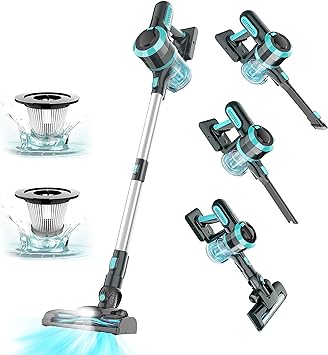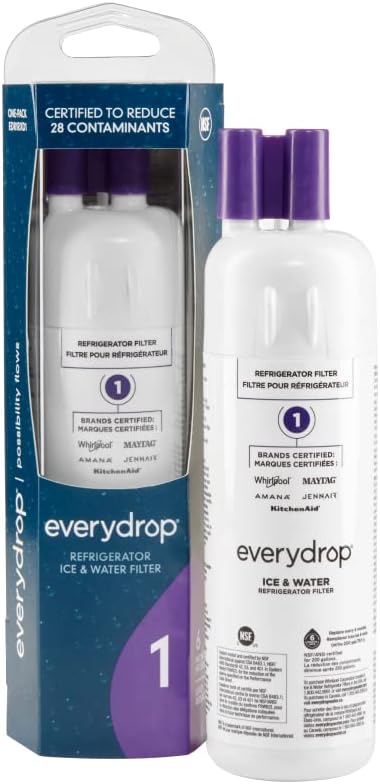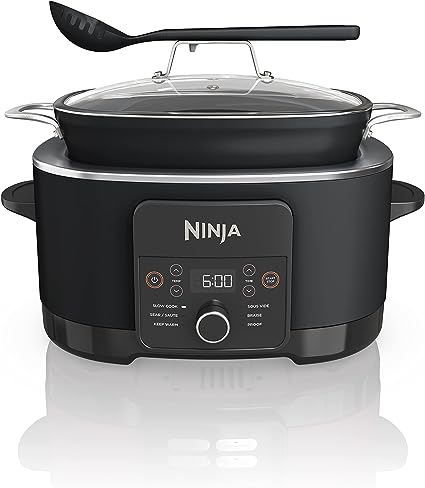A Gardener's Handbook: Essential Tools and Techniques for Urban Indoor Gardening

Are you an urban gardener who is looking for essential tools and techniques for indoor plant care? A Gardener's Handbook: Essential Tools and Techniques for Urban Indoor Gardening is the perfect guide for you! This book provides detailed instructions on the latest and best gardening tools for small spaces and innovative gardening gadgets. From novice gardeners to seasoned green thumbs, this handbook offers tips and tricks on how to create a beautiful and thriving indoor garden.
Not only does this book provide detailed instructions, it also offers advice on how to save money and time. With this book, you can easily find the right tool and techniques for your specific needs. With this comprehensive collection of helpful tips, you can turn your home into a lush oasis of green plants. So, don't wait any longer, get your copy of A Gardener's Handbook: Essential Tools and Techniques for Urban Indoor Gardening today and start transforming your home into a beautiful and productive indoor garden.
Choosing the Right Plants
Choosing the right plants for your garden is essential for a successful and healthy environment. Knowing how to care for indoor plants, best plants for low-light environments, watering tips for houseplants, and common mistakes in plant care can help you select the best plants for beginners. Additionally, it is important to identify plants that are pet-friendly, signs of common plant diseases, and natural remedies for plant pests.
It is also important to consider how to prevent overwatering plants, identify nutrient deficiencies in plants, and pick plants that will improve air quality.
Identifying Suitable Plants
Making the right choice of plants for your interior space is the key to creating a vibrant and lively atmosphere. Identifying suitable plants can be a challenge, but with the right knowledge and research, you can find the perfect plants for your home.
When selecting plants, it is important to consider the pet-friendly varieties that are available. Many plants can be harmful to animals if ingested, so it is important to research the species you are selecting to make sure they are safe for your pets. Additionally, you can look for plants that are known for improving air quality, such as spider plants, English ivy, and peace lilies.
When it comes to style, there are a variety of plants that can be used to create a calming atmosphere, or even a tropical or desert vibe. You can also find colorful plants for adding visual interest, or subtle greens for a more naturalistic look.
It is also important to understand the sunlight requirements of the plants you select. If you do not have access to a sunny spot in your home, there are still plenty of low-light plants that can thrive indoors. To ensure your plants are getting the nutrients they need, it is also helpful to understand how to identify nutrient deficiencies in plants.
Understanding Sunlight Requirements
Choosing the right plants to bring into your home can seem like a daunting task, but with a little research, you can find the perfect ones to suit your decor and needs. Understanding sunlight requirements for each plant is key to success. When it comes to indoor plant care, the amount of sunlight they receive is critical. Too much can burn them, while too little can prevent them from growing and thriving.
For plants that need full sun, a south-facing window is ideal. If the area is too bright, sheer curtains can be used to filter out some of the light. For those that require partial sun, east or west-facing windows will provide the right amount of light. In both cases, be sure to keep plants several feet away from the window to prevent direct sunlight from scorching them.
If you don't have access to natural light, artificial light can be used as an alternative. Consider investing in a light spectrum lamp or LED light strip. You'll need to adjust the intensity and duration of the light depending on the type of plant you're growing.
When selecting plants for your home, consider the amount of sunlight they need. It may be necessary to move plants around the house to ensure they get the light they need.

Considerations for Low-Light Plants
Now that you have a better understanding of what to look for when choosing plants, let's focus on considerations for low-light plants. Low-light plants are a great choice for busy pet owners, as they require less maintenance and still add a touch of greenery to your space. When selecting indoor plants for a low-light environment, it's important to consider the type of plant that will thrive.
Aloe vera is one of the most popular low-light plants. It's easy to care for and doesn't require much sun to thrive. Aloe vera is also a pet-friendly plant, making it a great option for pet owners looking to liven up their home with greenery. Other great low-light plants include ferns, peace lilies, philodendrons, and spider plants. All of these plants require minimal sunlight and are ideal for pet-friendly homes.
When selecting plants for your home, it's important to pay attention to the plant's care instructions. Low-light plants may require more water than other plants, so it's important to monitor the soil and water accordingly. Additionally, it's important to watch for signs of nutrient deficiencies, as these can often be solved with a liquid fertilizer.
Selecting the Right Tools
When it comes to selecting the right tools for urban indoor gardening, Deciding on Container Size, Choosing the Right Potting Mix, Buying the Right Pots and Planters are all important steps. To start, should be considered. Larger plants require larger pots, while smaller plants can thrive in smaller containers. Furthermore, it is important to choose the right . Organic potting soil gives plants the best chance of success. Additionally, it is important to purchase that can properly hold the potting soil.
Deciding on Container Size
When it comes to urban gardening, deciding on the right container size is essential to ensure the success of your plants. Container size is determined by a number of factors, such as the type of plant you’re growing, the amount of light available, and the soil mix you choose. Smaller containers will require more frequent watering and fertilizing, while larger containers can hold more moisture and nutrients, allowing plants to grow bigger and stronger.
The you choose will also be important for keeping your plants healthy. Plastic containers are lightweight and provide excellent drainage, but they can be prone to cracking. Clay pots, on the other hand, are heavier and retain moisture more effectively, but they can be harder to drill for drainage holes. Consider the size of your space and the type of plant you’re growing when selecting containers.
When it comes to soil, you’ll want to find the right mix for your plants. Choosing the best potting soil for urban gardening can be difficult, but it’s important to make sure you have the right nutrients for your plants. Consider using a combination of organic fertilizers, such as compost, manure, and vermiculite, to provide the necessary nutrition for your plants.
Choosing the Right Potting Mix
Now that you have chosen the right plants for your urban indoor gardening, it is important to select the right tools and materials to ensure success. One of the most important elements to consider is the potting mix for your plants. It is essential to choose the right potting mix to provide your plants with the nutrients they need and the drainage they require.
Organic fertilizers are the best organic fertilizer for indoor plants and are a great way to provide your plants with the necessary nutrients they need to thrive. They are especially beneficial for urban gardening since they are known for long-term sustainability, and provide your plants with the essential nutrients they need to survive. There are various types of organic fertilizers for urban indoor gardening, and it is important to research the different types and decide which is best for your plants. It is also important to understand how to choose organic fertilizers for urban gardening, since the wrong type of fertilizer can result in your plants not receiving the necessary nutrients and can even cause them to become diseased. Additionally, it is beneficial to understand the benefits of using organic fertilizers in indoor gardening so that you can make an informed decision when selecting the right fertilizer for your plants.
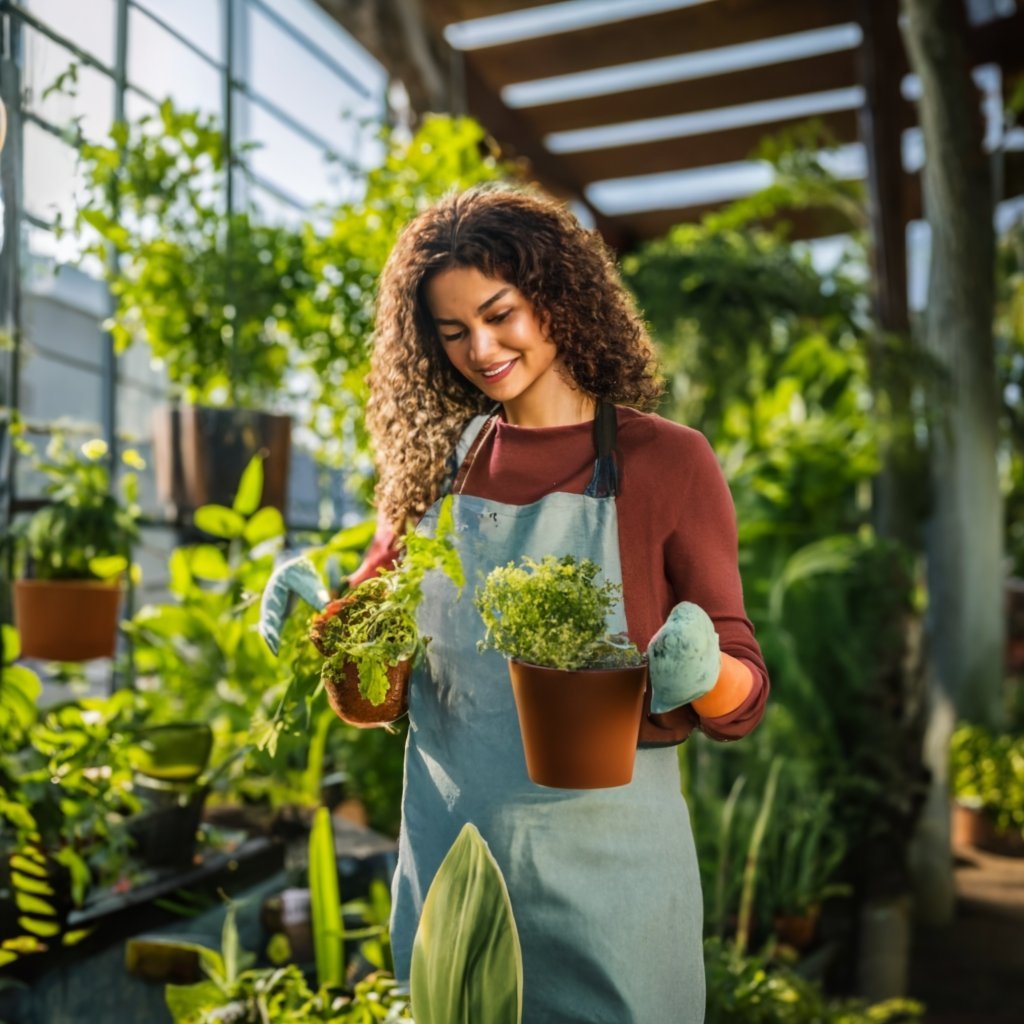
Buying the Right Pots and Planters
Now that you have the right plants and necessary tools for your urban indoor garden, it's time to decide on the remaining items. Buying the right pots and planters can be a tricky business, but with the right knowledge, you can make the best decision for your garden.
The size of the container can make a big difference in the success of your plants. If you’re growing small plants in a large pot, the soil will take longer to dry out and be prone to root rot. On the other hand, a container that is too small will limit the growth of your plants. Make sure to pick a container that is the right size for the plant you are growing.
The type of potting mix you use is also important. Potting mixes are specially formulated to provide the best environment for plants to thrive in. Look for a mix that is lightweight, well-draining, and contains all the essential nutrients your plants need.
Finally, you need to decide on the type of pot or planter that is best for your garden. There are a variety of materials available, from ceramic to plastic to metal. Consider the aesthetic you’re going for, the weight of the pot, and the durability of the material before making a purchase.
Creating an Optimal Growing Environment
Creating an optimal growing environment for indoor gardens requires a few essential components. Setting up the indoor garden area, controlling the temperature and humidity, and maintaining proper watering are key steps towards achieving success.
When setting up the indoor garden area, the right indoor gardening equipment, grow lights for indoor gardening, and hydroponic systems for urban gardening will help create the perfect environment for plants to thrive. Additionally, the use of indoor gardening containers and indoor gardening tools will make the process of gardening easier.
Setting Up an Indoor Garden Area
Transitioning from selecting the right tools to creating an optimal growing environment, setting up an indoor garden area is the first step of success for any indoor gardener. With the right knowledge and a few basic supplies, anyone can create the perfect space to grow plants indoors. Indoor gardening techniques are simple and straightforward, and the right setup will make your plants thrive.
Beginners may find it overwhelming when how to start an indoor garden, but the basics are simple. First, consider what kind of plants you want to grow and then choose the area you want to use for your garden. Keep in mind that different plants have different needs, so it’s important to find the best plants for indoor gardening that are compatible with your space and environment.
When setting up your indoor garden, you’ll need to make sure you have the right equipment. Look for adjustable shelves, grow lights, and containers that will fit in your space. Ensure that the area you choose is well-ventilated and free of noise. Additionally, following tips for successful indoor gardening, such as proper watering and lighting, will help you create a thriving indoor garden.
You’ll also need to think about indoor gardening maintenance.
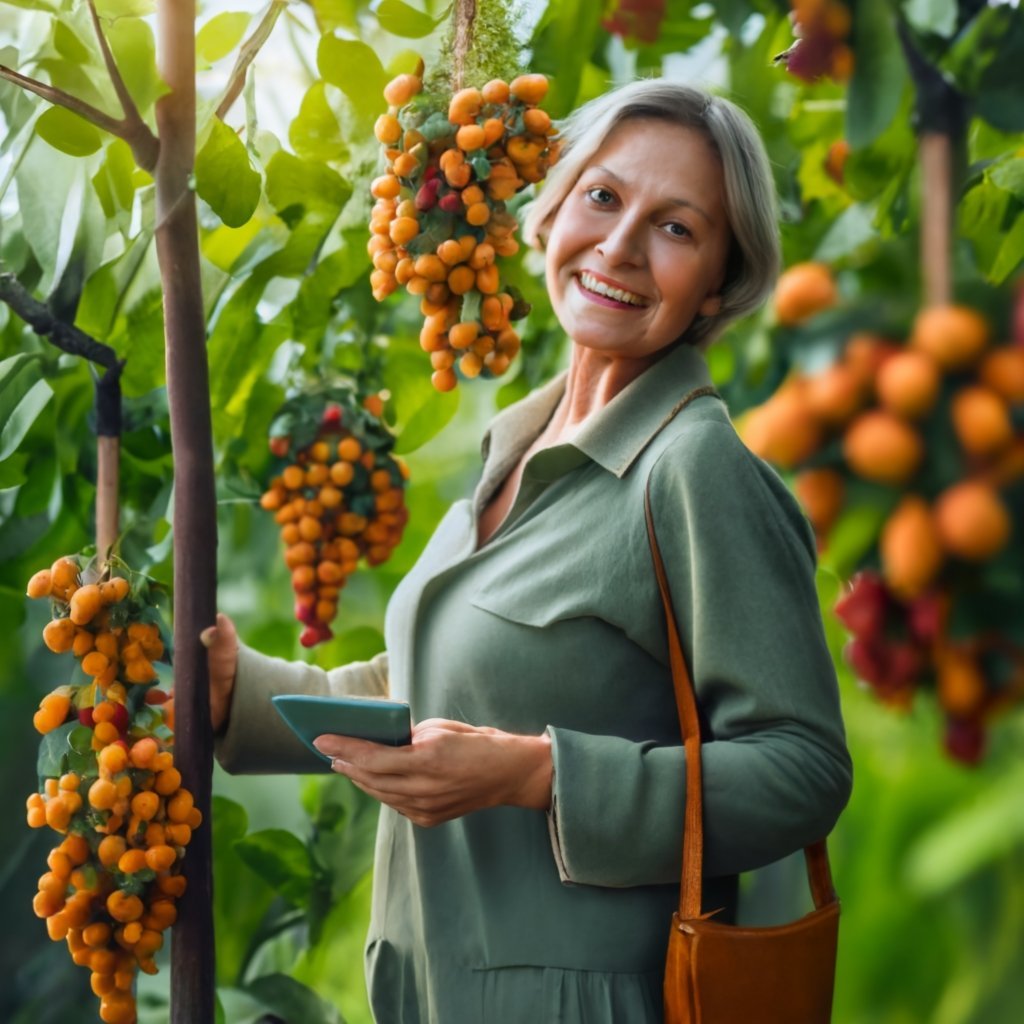
Controlling Temperature and Humidity
Good tools and knowledge are essential for creating an optimal growing environment, but there is far more to consider than just the basics. In order to really thrive, plants need the right temperature and humidity levels. Controlling these two elements is key to achieving a successful indoor garden.
An effective way to regulate temperature and humidity is to invest in a humidifier and a dehumidifier. Humidifiers can be used to increase moisture levels, while dehumidifiers bring down the moisture levels. Additionally, both appliances can be used to monitor and maintain a consistent level of humidity and temperature in the air, giving plants a more stable environment.
Another way to control the temperature and humidity is to invest in a grow tent. Grow tents are insulated, waterproof, and made to keep the environment inside optimal for plants. Grow tents also come with built-in vents and fans that allow for air circulation and temperature control.
Finally, try to find a spot in your home that is away from heat sources, such as air conditioning vents, radiators, and windows. A cool spot with consistent temperatures and low draft is ideal for plants. You can also try adding extra insulation to windows and doors to keep out drafts of cold air.
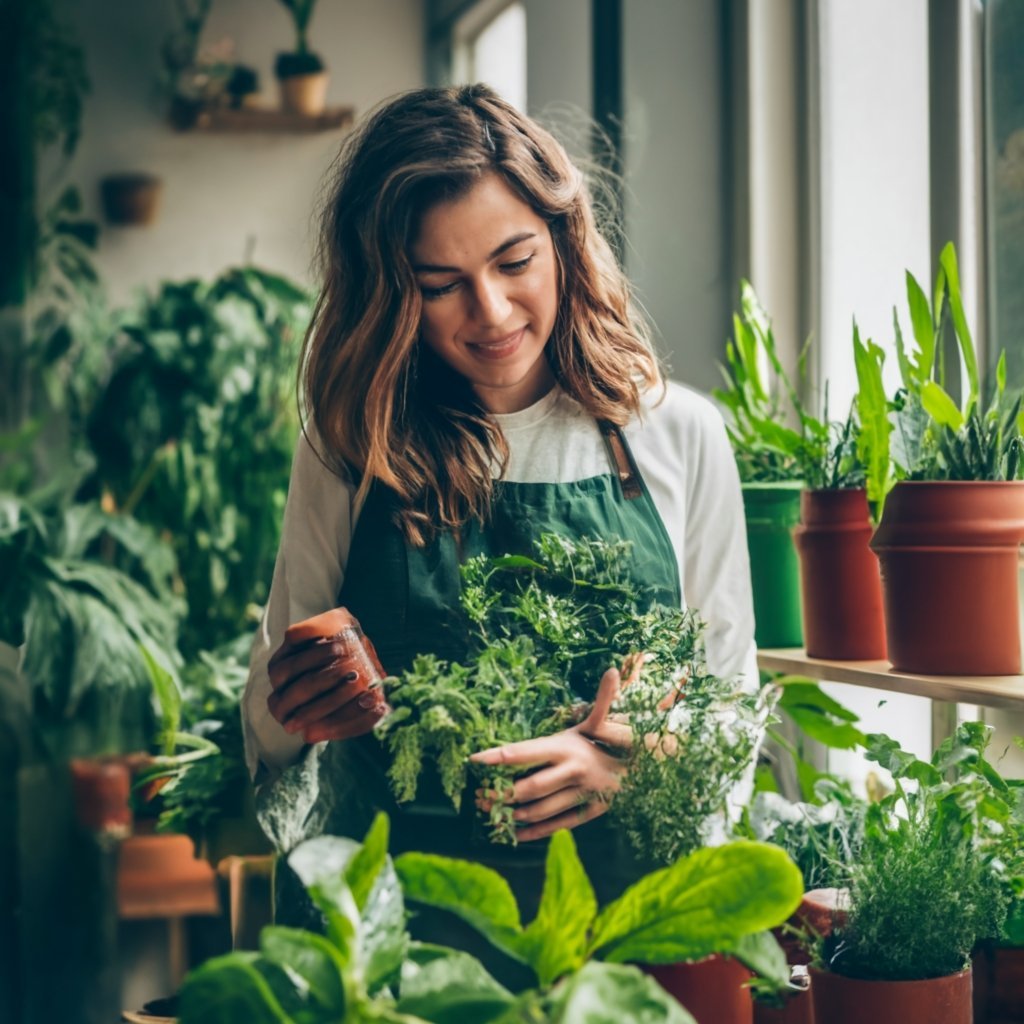
Maintaining Proper Watering
Having the right tools for growing plants indoors is important, but it's only part of the equation for success. The next step in creating an optimal growing environment is maintaining proper watering. This means understanding how much water to provide, and when, for each type of plant.
For indoor gardening beginners, it can be helpful to research each type of plant you plan to grow and know what their ideal growing conditions are. Different plants have different water needs, so it's important to match the watering schedule to the type of plants you are caring for. There are a few general rules that can be helpful when starting out.
It's important to keep in mind that indoor plants should be watered on a regular basis, but not too often. Overwatering can cause root rot and other problems. Instead, focus on providing just enough water. You may need to adjust the frequency of watering depending on the season and how quickly the soil dries out.
You can also use indoor gardening watering tips like checking the soil moisture levels before watering, or using a moisture meter to get more precise measurements. It's also important to avoid watering the leaves and try to keep the water away from the stems.
Planting and Growing Tips
Planting and Growing Tips can be intimidating for many, but with the right preparation, tools, and knowledge, it can be a fun and rewarding experience! To get started, soil preparation, planting seeds or plants, fertilizing, and watering are essential. With container gardening tips, vertical gardening ideas, and hydroponic growing tips, you can start your own indoor garden. Raised bed gardening tips will help you maximize your outdoor space. You'll also need to know the best indoor gardening tools, essential tools for urban gardening, and gardening supplies for indoor plants.
Soil Preparation
Now that you have the must-have equipment for indoor gardening, it's time to move on to the next step in the process: soil preparation. This is an essential part of growing healthy plants, especially for low maintenance indoor plants that will thrive in small spaces. Whether you're planting seeds or plants for a green wall at home, soil preparation is the key to maximize sunlight and nutrients for your indoor garden. In this section, we'll discuss tips for selecting the best soil, how to amend it, and the best fertilizers for indoor plants.
Soil is the foundation for a healthy indoor garden. It must be rich in organic matter and drain well. To achieve this, you'll need to select the right type of soil for your indoor plants. You can buy potting soil and soil amendments for indoor plants at any garden center or online. When selecting potting soil, look for one that is light and airy, full of organic matter, and well-draining. It should also be free of pests and disease-causing organisms.
Once you've selected the right soil, you'll need to amend it to improve its drainage and aeration. To do this, add organic matter such as compost or peat moss to the soil.
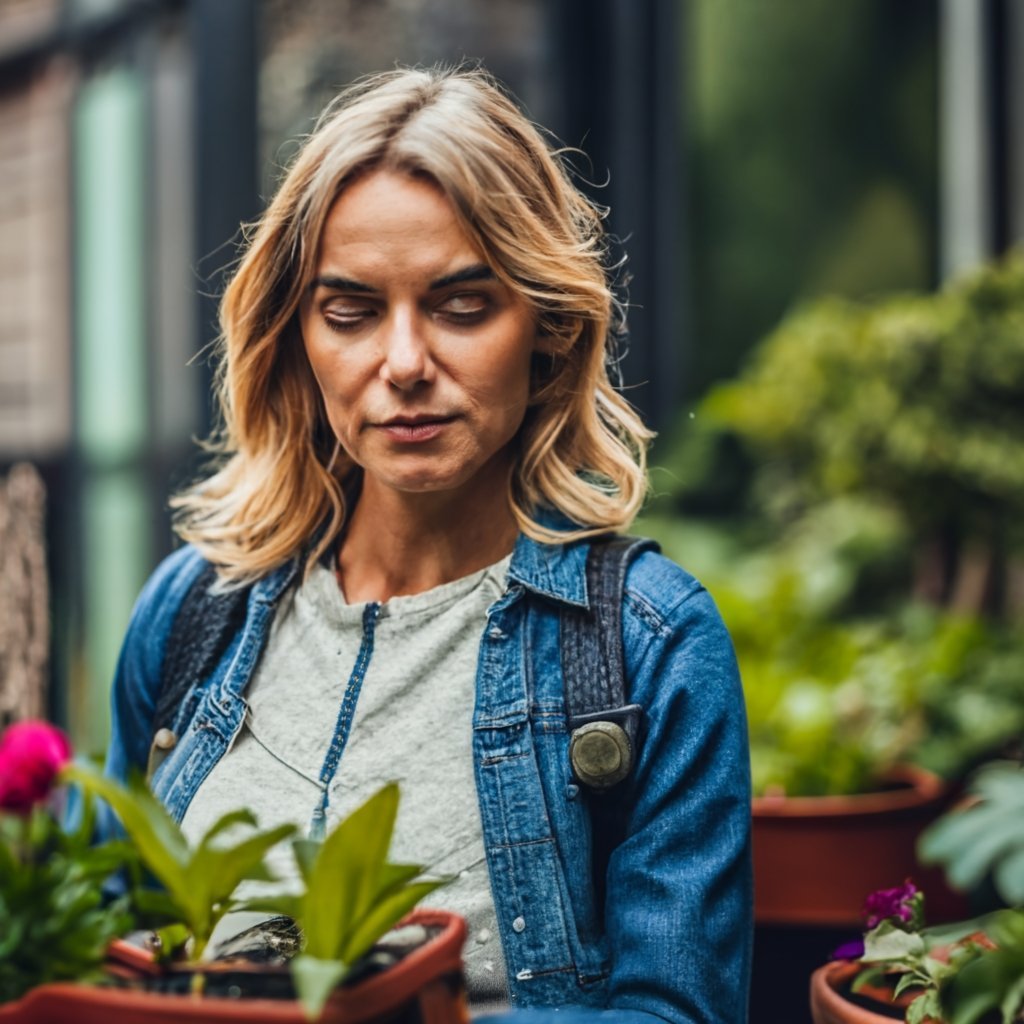
Planting Seeds and Plants
Planting is the foundation for any successful indoor garden. It requires careful consideration as to where and how you will place your plants and seeds, as well as what type of soil preparation is necessary for them to thrive. With the right tips and tricks, you can create beautiful indoor gardens within small spaces and maximize your available light for indoor gardens.
One of the best indoor plants for small spaces are those that don't require much attention, such as succulents, cacti, or air plants. Fortunately, there are many tips for selecting indoor plants that can help you pick the best options for your garden. If you are unsure of how to care for your plants, don't hesitate to ask for indoor plant care guidelines from knowledgeable plant nurseries or gardeners.
When planting your plants, it's important to remember that some plants need to be placed in larger containers, whereas others can be planted directly into the soil. When planting smaller plants, make sure to avoid overcrowding them. If you have small space gardening ideas, such as creating a green wall at home or balcony gardening tips, then make sure to consider these when planning your garden.
Fertilizing and Watering
Once you have provided the perfect growing environment for your plants, it’s time to focus on fertilizing and watering. Fertilizing and watering your plants is key to maximizing their potential. With the right care, your plants will thrive and you can enjoy the fruits of your labor.
Organic fertilizers can be used to promote healthy growth in your plants. Organic fertilizers provide essential nutrients to the plants and can be used to enhance their growth. They can also be used to improve the quality of the soil and prevent diseases. Additionally, organic fertilizers help to reduce the amount of water needed for the plants, which can save you money in the long run.
When it comes to watering your plants, it’s important to know the right amount and frequency for each species. Too much water can lead to root rot, while too little can cause the plants to become stunted and weak. It’s best to check the soil each day and adjust the amount of water accordingly. A good rule of thumb is to water your plants deeply, but infrequently.
Finally, if you’re growing plants indoors, it’s important to keep in mind the amount of light they will receive.
Troubleshooting Common Issues
When it comes to troubleshooting common issues in urban indoor gardening, identifying and addressing pest problems, diagnosing plant diseases, and dealing with poor growth are key components. To get rid of aphids in indoor gardens, try using natural remedies such as insecticidal soap and neem oil. Spider mites can be prevented in urban gardens with regular pruning and proper ventilation. Mealybugs can be dealt with by using natural remedies like rubbing alcohol and vinegar. To effectively control indoor garden pests, use a combination of natural remedies and insecticides.
Identifying and Addressing Pest Problems
Now that you have the basics of planting and growing in indoor gardens down, it's time to think about troubleshooting. While indoor gardens can be wonderfully rewarding, they can also come with their own set of common issues. Let's start with the most obvious one: pests. Identifying and Addressing Pest Problems can be a tricky and often frustrating process, so let's break it down into more manageable steps.
The first step is to identify what type of pest has infiltrated your garden. This can be done by examining the plant closely, looking for signs of infestation, such as wilting or discoloration. If you can't tell what type of pest is present, you can always contact an expert for help.
Once you know what type of pest is causing trouble, it's time to take action. Some more common pests and include aphids in indoor gardens (try spraying the leaves with neem oil or insecticidal soap), spider mites in urban gardens (manually remove them from the plants, then spray the leaves with water), and mealybugs (remove them with a cotton swab dipped in rubbing alcohol).
Diagnosing Plant Diseases
Diagnosing plant diseases can be a tricky endeavor. Identifying the issue and finding a solution can seem like a daunting task, but it doesn't have to be! With a little bit of knowledge and the right resources, you can effectively diagnose and treat any plant disease.
One of the first steps to diagnosing a plant disease is to closely examine the affected plant. Check for any abnormalities, discoloration, wilting, or stunted growth. Pay attention to the leaves, stems, and roots of the plant, looking for any signs of discoloration, deformity, or mold. Once you have identified the symptoms, it is essential to research the plant and its potential diseases. This can be done by using resources such as gardening books, the internet, or even speaking with other gardeners.
When researching, it is important to note the type of plant, its environment, and the conditions it has been exposed to. This information can help to narrow down the cause of the plant disease. Additionally, you may need to take soil samples or bring the plant to a specialist for further examination.
Once you have identified the cause of the disease, take steps to eliminate it.
Dealing with Poor Growth
The previous section discussed a range of tips for planting and growing indoor gardens, but just like any other type of gardening, there can be challenges that arise. Dealing with Poor Growth is one of the most common issues that urban gardeners face, and there are a few possible causes. The first is an imbalance of nutrients in the soil, which can be addressed by using the right organic fertilizers such as those that are specially formulated for indoor plants. Additionally, if the plants are not getting enough light, they may be unable to absorb the necessary nutrients even if they are present in the soil. Identifying the source of poor growth is the first step to correcting this issue, and understanding in indoor gardens can be a helpful place to start.
In terms of lighting, certain plants need more light than others, and understanding signs of inadequate lighting in urban indoor gardens is key. If the plants are looking leggy, have a lighter color than normal, or have weak and spindly stems, it may be a sign that they need more light. In this case, best types of artificial lighting for urban indoor gardens and how to avoid light burn in indoor plants should be researched.
Harvesting and Storing Crops
Harvesting and storing crops properly is essential for optimal crop yields and shelf life. Knowing when to harvest, the best tools for harvesting crops, and proper storage tips are key for successful crop production and extending the shelf life of produce. Garden shears, pruning snips, and harvesting knives are all great tools for harvesting, while cut and come again and selective harvesting are two popular techniques. When it comes to storage, root cellar storage, vacuum sealing, freezing, and canning are all great methods.
When to Harvest
After understanding how to care for and maintain your plants, the next step in the process is harvesting your crops. But knowing when to harvest is just as important as the harvesting process itself. When to Harvest is an art that can be perfected with practice.
The best time to harvest is usually within the first few weeks of the plants' maturity. This time period is when most crops are at their peak in terms of flavor and nutritional value. To get the most out of your harvest, you should inspect your plants daily and look for signs that they are ready to be picked.
The tools you use for harvesting can make a big difference. , , and are all great options. You can also use for smaller fruits and vegetables. If you are harvesting root vegetables, you can use a spade or digging fork.
Different techniques can yield different results. is a great way to cut and come again with crops like lettuce and spinach. is another technique that can be used to extend the shelf life of certain vegetables. With this method, you can pick some of the produce without harvesting the entire plant.
Proper Storage Tips
Now that you know when to harvest crops and the best techniques for harvesting, it's time to consider proper storage methods to ensure your crops stay fresh and have a long shelf life. Vacuum sealing, freezing, and root cellar storage are all excellent methods for storing crops. Vacuum sealing is a great option for produce that you want to store for a longer period of time. It removes the air from the container and helps to preserve the food. Freezing is another great way to store produce and is especially useful for fruits and vegetables that you plan to eat later. Lastly, root cellar storage is one of the oldest and most reliable methods for storing crops. It involves storing vegetables and fruits in boxes, bags, or barrels in a cool, dry place.
When it comes to tips for storing crops, it's important to take the time to do it right. Make sure to pre-cool your produce to the ideal temperature as quickly as possible and keep it in a cool, dark place. Additionally, it's important to keep different types of produce separate, as they can have varying shelf lives. If you plan to store produce in bulk, be sure to use multiple containers and check the contents periodically for spoilage.
Extending the Shelf Life of Produce
Extending the shelf life of produce is a crucial step in preserving the fruits of labor. Knowing how to properly store fruits and vegetables can save time, energy and money. There are a few techniques that can be employed to ensure the longevity of produce. Vacuum sealing is a popular option as it limits the amount of oxygen that comes in contact with the food. This helps to reduce the speed of spoilage and keeps the food fresh for longer. Freezing is another option that can be used for both short-term and long-term storage. Fruits and vegetables can be frozen whole or cut up into smaller pieces. Additionally, root crops can be stored in a root cellar or in a cool, dry place. When done correctly, this method can keep vegetables fresh for several months. Lastly, canning is a great way to preserve foods for an extended period of time. Canning involves heating fruits and vegetables in a closed container, which eliminates the growth of bacteria and mold. While canning is a great way to extend the shelf life of produce, it is important to ensure that the cans are properly sealed and stored in a cool, dry place.
In conclusion, there are a variety of methods that can be used to extend the shelf life of produce.
Indoor Gardening Maintenance
Indoor gardening requires regular maintenance, such as pruning and replanting, composting and mulching, controlling weeds and pests, and understanding the light requirements for different types of indoor plants. Pruning is essential to maintain the health of indoor plants and can help promote new growth. Replanting is necessary when a plant has outgrown its pot or has become root-bound. Composting helps to provide vital nutrients to indoor plants and is a great way to recycle organic material. Mulching can help retain moisture and prevent weeds from taking over.
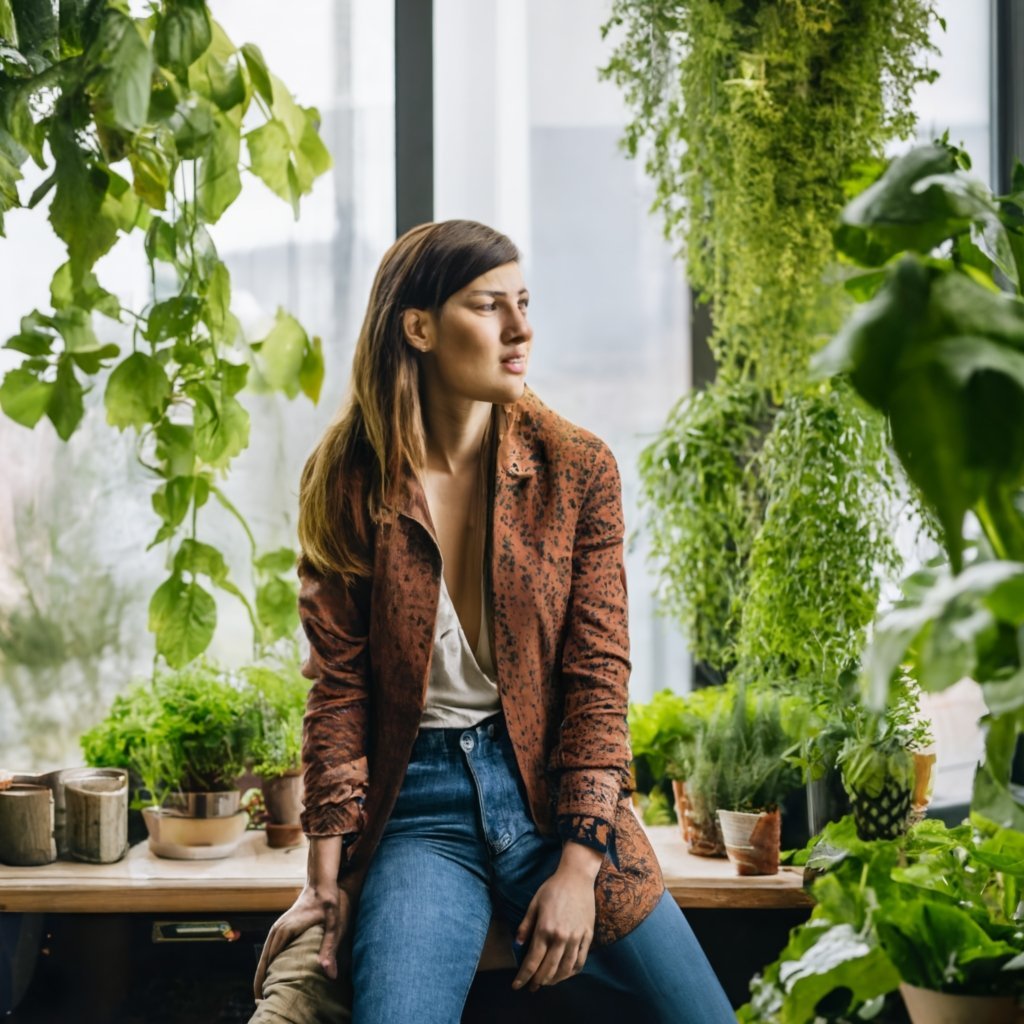
Pruning and Replanting
Now that you have the tools and techniques to harvest and store your crops, it's time to move on to the next step in your indoor gardening journey: maintenance. Pruning and replanting are two essential activities to ensuring your indoor garden remains healthy and vibrant. Pruning is the process of cutting away parts of a plant to promote a more desirable shape and size. Pruning also helps remove diseased and dead branches, which can improve the overall health of your plants. As for replanting, this is the act of moving plants from one pot or area to another. The process of replanting helps to increase air and water circulation to the roots, while also allowing you to change up the aesthetic of your garden.
Composting and Mulching
After harvesting and storing your crops, the next step to maintaining a successful indoor garden is to understand how to properly care for your plants. Pruning and replanting, composting and mulching, controlling weeds and pests, and understanding light requirements are all important components of indoor gardening maintenance.
Composting and mulching are two essential elements of indoor gardening maintenance that contribute to the health and growth of your plants. Composting involves using organic matter, such as plant materials and kitchen scraps, to enrich the soil and promote healthy plant growth. You can create your own compost in a compost bin or purchase compost from a local garden supply store. Mulching is another great way to add nutrient-rich organic matter to your soil. Not only does it conserve moisture and prevent weeds, but it also provides beneficial microorganisms to your plants that will help them to grow.
When it comes to composting and mulching, there are a few things to consider. . Make sure to use a compost that is specific to the type of plants you are growing, as each type of plant has different needs.
Controlling Weeds and Pests
With proper harvesting and storage practices, you can enjoy your indoor garden's bounty for months. But proper maintenance is also essential for keeping your indoor garden healthy and productive. Controlling weeds and pests is a crucial part of this maintenance. Here are some tips for controlling weeds and pests in your indoor garden.
The first step in controlling weeds and pests is to regularly inspect your plants and keep them clean. Look for signs of damage, pests, or discoloration. Remove any dead or dying leaves, and if you find any insects, carefully remove them with tweezers. If you notice any signs of disease, check with your local garden center for advice on how to treat it.
Use a combination of preventive measures and natural remedies to control pests and weeds. Organic fertilizers can help control weeds and pests by providing essential nutrients to your plants. Look for products specially formulated for indoor plants and follow the instructions carefully. You can also use natural insecticides, such as neem oil, to repel pests.
If you have an indoor garden, you should also take steps to control the environment. Make sure you have the ideal indoor temperature for your plants, and keep your garden away from direct sunlight.
Additional Tips and Tricks
When it comes to Additional Tips and Tricks for indoor gardening, it's important to consider the different types of plants you may want to grow: Herbs and Flowers, Fruits and Vegetables, and even build an Indoor Greenhouse. For all three, best practices for watering indoor plants and indoor plant care tips and tricks are essential to success. To ensure proper hydration, you should water your indoor garden often and look out for signs of overwatering. You should also consider choosing the right lighting for your urban indoor garden and maximizing natural light.
Growing Herbs and Flowers
When it comes to indoor gardening, growing herbs and flowers can be a fun and rewarding experience. But these plants require some extra care, so it's important to understand how often to water them, the signs of overwatering, and the right amount of sunlight. With the right tips and tricks, you can have a thriving indoor garden full of lush herbs and flowers.
Hydration is key when it comes to indoor plants; they need the right amount of water to stay healthy. Depending on the types of herbs and flowers you have, you'll want to adjust the frequency of watering. If you're growing more delicate plants, it's best to water them every two to three days. However, more hardy plants can go up to five days without water. To ensure optimal hydration, use a moisture meter to monitor the soil. This will help you avoid overwatering, which can cause root rot and other issues.
When it comes to lighting, it's important to match the plants' needs with the amount of natural sunlight you can provide. Most herbs and flowers need six to eight hours of sunlight a day, so you'll want to place these plants in areas with plenty of exposure to the sun.
Growing Fruits and Vegetables
Now that your indoor garden is up and running, it's time to focus on growing some delicious fruits and vegetables. From tomatoes to carrots to peppers, you can create an abundant harvest right in the comfort of your own home. But, it's important to choose the right plants and follow some simple tips and tricks to ensure your crop's success.
First, you'll want to select high-yielding varieties of vegetables that are well-suited for urban indoor gardens. Then, space your plants to allow for adequate air circulation and make sure they get the right amount of light and water.
When it comes to watering, . Signs of overwatering include wilting, yellowing leaves, and moldy soil. To ensure your plants don't become too dry or too wet, experiment with different watering schedules and keep track of the results.
Additionally, it's essential to provide your plants with the right amount of light. Depending on the type of plant, they may need more or less sunlight.
Building an Indoor Greenhouse
Taking your indoor garden to the next level is achievable by building an indoor greenhouse. An indoor greenhouse provides the perfect environment for your plants to thrive, regardless of the season. Plus, the additional space and the right equipment for your indoor garden can help you to create a beautiful and productive space for growing herbs, flowers, fruits and vegetables.
Creating an indoor greenhouse can be a great way to maximize the benefits of an indoor garden. With an indoor greenhouse, you can maintain the ideal temperature and humidity levels necessary for your plants to grow and flourish. Additionally, by adding a grow light to your indoor greenhouse, you can provide your plants with the perfect amount of natural light, ensuring they get the nutrients they need to stay healthy.
Choosing the right equipment for your indoor greenhouse is essential. It is important to select the right type of grow light to ensure that your plants get the best possible lighting. It is also important to select the right type of insulation, ventilation, and dehumidification equipment to ensure that your plants get the right balance of temperature, humidity, and air flow. With the right equipment, you can create an ideal environment for your plants to thrive in.
Maximizing natural light is also important for an indoor greenhouse.

Conclusion
Indoor gardening can seem daunting, but with the right plants, tools, and techniques, you can create a thriving urban garden. A Gardener's Handbook: Essential Tools and Techniques for Urban Indoor Gardening provides all the tips and tricks you need to get started. From choosing the right plants for your garden to troubleshooting common issues, this guide will help you every step of the way. From harvesting and storing crops to caring for your plants, this book will become your go-to guide for all your indoor gardening needs. With its essential tools and techniques, you can finally create the indoor garden of your dreams. Now is the time to get started!
Make Your Business Online By The Best No—Code & No—Plugin Solution In The Market.
30 Day Money-Back Guarantee
Say goodbye to your low online sales rate!


